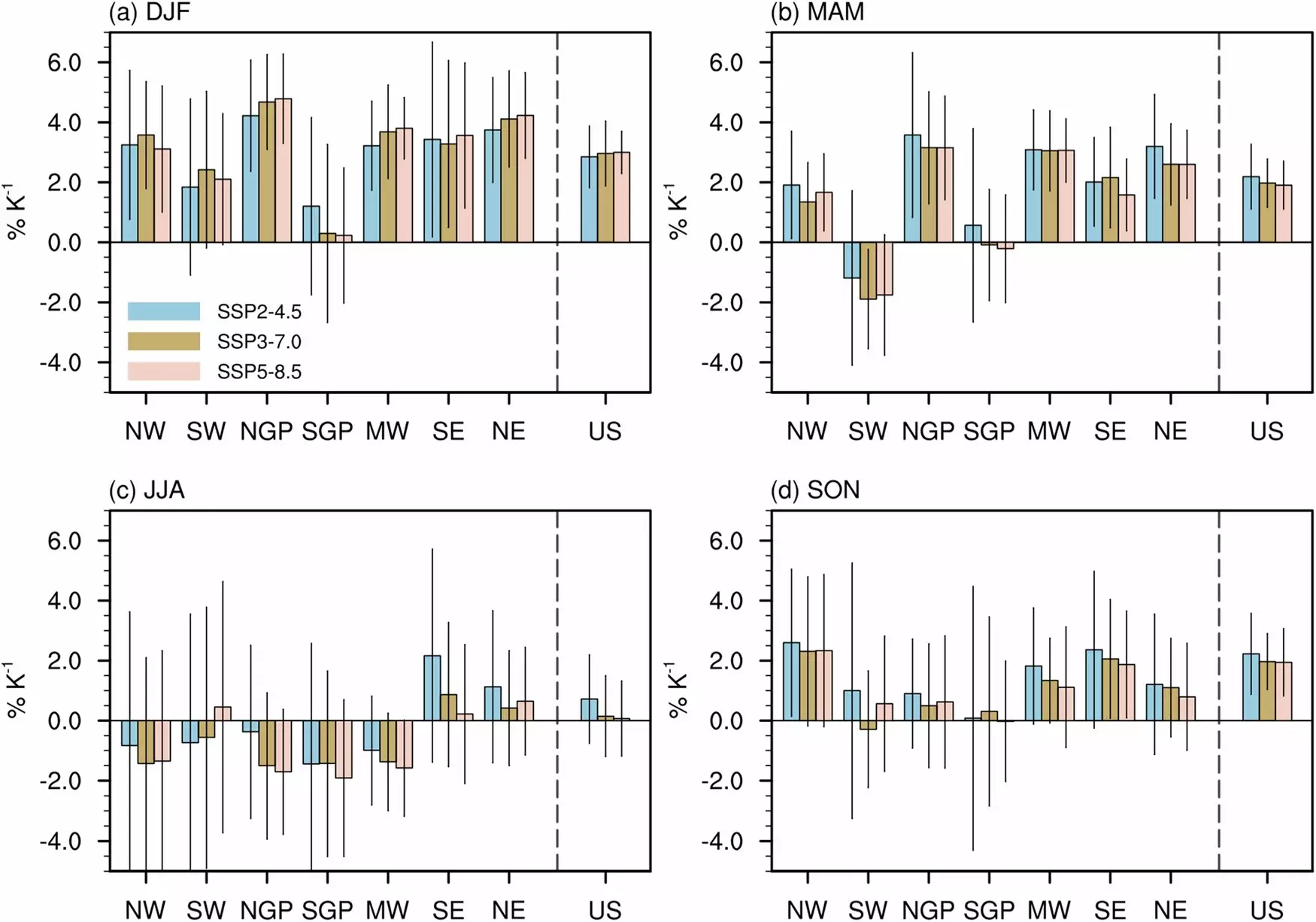As climate change continues to reshape our planet’s weather systems, evidence suggests that Americans will experience significantly wetter winters in the coming decades. A recent study spearheaded by a team of researchers at the University of Illinois Chicago unveils alarming projections regarding winter precipitation patterns throughout the United States. Utilizing advanced climate modeling techniques, the researchers aim to provide insights into how these changes could fundamentally affect various sectors, including agriculture, water resources, and infrastructure.
The research, published in *npj Climate and Atmospheric Science*, centers on projections for the end of the 21st century, specifically the period from 2070 to 2099. The team, guided by Professor Akintomide Akinsanola, analyzed data from 19 different Earth system models covering seven distinct U.S. subregions. Their findings indicate an unsettling trend: a projected increase in mean winter precipitation of approximately 2-5% for each degree of warming. This quantifiable change sheds light on how climate change may disrupt previous weather norms, particularly in the Northwest and Northeast, which are expected to experience some of the most significant increases in winter precipitation.
One of the standout revelations from the research is the anticipated increase in the frequency of “very wet” winters—defined as those winters within the top 5% of historical precipitation levels. Where such occurrences were once rare, the study forecasts these extreme weather events may happen as frequently as once every four years in specific regions. This mountain of data starkly contrasts with earlier studies that hinted at a higher level of uncertainty in summer precipitation patterns, indicating a pressing, undeniable trend in winter climates.
The transition from snowfall to increased rainfall during winter carries critical implications for the existing environmental framework. What may traditionally be a snowy winter in the Northeast, for example, could morph into a rain-laden season, prompting concerns about the impact on snowpack and subsequent water resources. This shift is causing alarm among agricultural sectors, as the reduction of snow depth directly affects spring runoff, which serves as a crucial resource for farming and water supply.
The study’s findings highlight that while winters will become wetter, not all regions are equally affected. The Southern Great Plains, encompassing key states like Texas and Oklahoma, see projections of minor minor precipitation changes interspersed with extreme dry spells. In this region, increasing instances of extreme drought could potentially mitigate the anticipated wet winters, underscoring the complexity of climate issues across the United States.
As winter weather cycles evolve, the implications extend beyond mere weather patterns to infrastructure and urban planning. The fear is that current systems may not withstand the projected increases in both mean and extreme rainfall, necessitating upgrades to drainage systems and buildings. Professor Akinsanola emphasizes the urgency of adapting our infrastructure to this new reality, suggesting that cities should be prepared for more floods and associated storm damage.
Any stagnation in development could exacerbate vulnerabilities, making the case for comprehensive evaluations of current infrastructure and proactive upgrades. As climate change continues to rear its head in unpredictable ways, delaying action could place communities at risk.
Looking ahead, Akinsanola plans to harness higher-resolution climate models for more localized predictions of changes in precipitation, heat waves, and extreme weather events. This ongoing research is critical as it will provide actionable data that can inform policy makers and industry stakeholders, enabling them to make informed decisions that better anticipate and mitigate the impact of climate change.
The study underscores a pivotal moment in understanding the future of winter precipitation in the United States. The profound implications on agriculture, infrastructure, and environmental stability cannot be overstated, marking it as an urgent priority for researchers, policy makers, and citizens alike to address the challenges posed by a changing climate before it’s too late.

